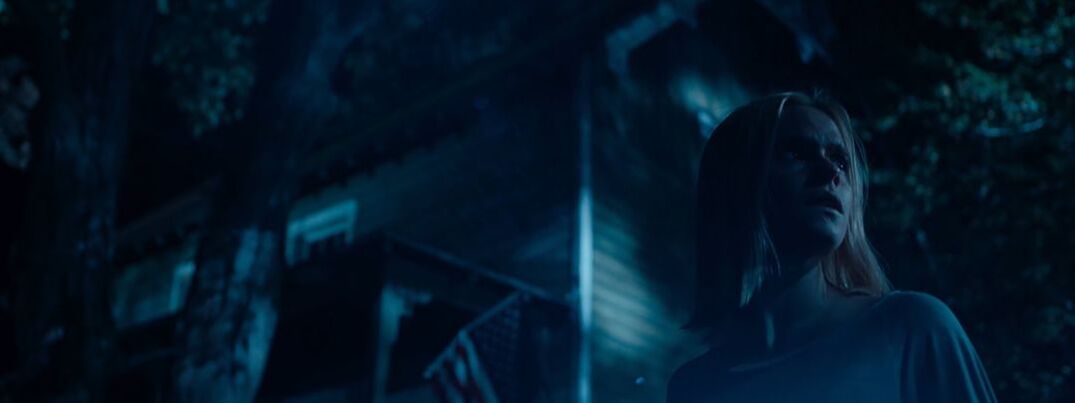|
★★★☆☆ As a descendant of the aquatic-creature-horror genre (sub genre? Sub-sub genre?), Braden R. Duemmeler’s feature directorial debut, What Lies Below, naturally inherited some Universal Classic Monsters nostalgia. Besides Creature from the Black Lagoon’s “Gill Man,” (1954) the common ancestor of so many cinematic water-terrors, What Lies Below also takes cues from a handful of other film classics. There’s dashes of Spielburg in the eerie lights that glow from the bottom of the lake, bits of Friday the 13th (1980) in the film’s isolated lake house setting, and echoes of dozens of teen summer camp films in the bright colors of the opening scenes. What Lies Below pulls together an eclectic mix of movie influences, but the question is whether or not all this inspiration actually works together. Although it is an entertaining thriller overall, What Lies Below takes on a bit more than it can handle. The film never quite comes into its own, jumping shakily back and forth between different themes and schemes.
0 Comments
Originally published on Elements of Madness ★★☆☆☆  Peter Flaherty as Eugene in CHOIR GIRL. Photography by http://www.FacesByRaphael.com | Melbourne Actors Headshots. Peter Flaherty as Eugene in CHOIR GIRL. Photography by http://www.FacesByRaphael.com | Melbourne Actors Headshots. Choir Girl sets up a story that begs to be told through pictures. Its protagonist, Eugene (Peter Flaherty), is a shy street photographer who hopes that his pictures will expose the hardships of everyday life in his neighborhood and, eventually, make him enough money to pack up and move somewhere better. But it’s not simply the main character’s profession as a photographer that makes this story so well suited for film. Choir Girl, the feature debut of writer/director John Fraser, is all about looking and being looked at, about capturing and criticizing images, and about creating perspective through the lens of a camera. Any narrative that is so centrally structured on these subjects is a narrative most artfully told through film or photography itself rather than words, music, or live performance. Films about film naturally develop multiple layers of self-reflexivity and can, in turn, create a self-aware viewing experience for the audience. Choir Girl sets the stage for such a viewing experience but, unfortunately, watches more like a rough first draft than a final cut. Although it is bubbling with potential, Choir Girl leaves much to be desired.
★★★☆☆ Excessive and explicit violence on screen always leads to questions about whether such images are necessary. If a director packs their movie with medieval torture and bodily trauma, does that violence serve a purpose, or is it simply a sadistic celebration of gore that delights in human pain? Is the audience expected to enjoy the blood and torture, or are they likely to have a more complex viewing experience? After watching the trailer for Sleepless Beauty, a torture horror film from director Pavel Khvaleev, I’ll admit that I had low expectations for the film as far as it’s use of violence, and I prepared myself for excessive gore with little meaning or thought behind it. However, I found myself pleasantly surprised by Sleepless Beauty, which, although by no means groundbreaking or flawless, makes a definite attempt to substantiate its numerous torture scenes with a bit of social commentary. While it does not succeed in every instance, Sleepless Beauty aims to create a sympathetic victim, explore her mental state, and ask relevant questions that go beyond the blood and guts on screen.
|
"Our embodied spectator, possibly perverse in her fantasies and diverse in her experience, possesses agency...finally, she must now be held accountable for it." Categories
All
|

